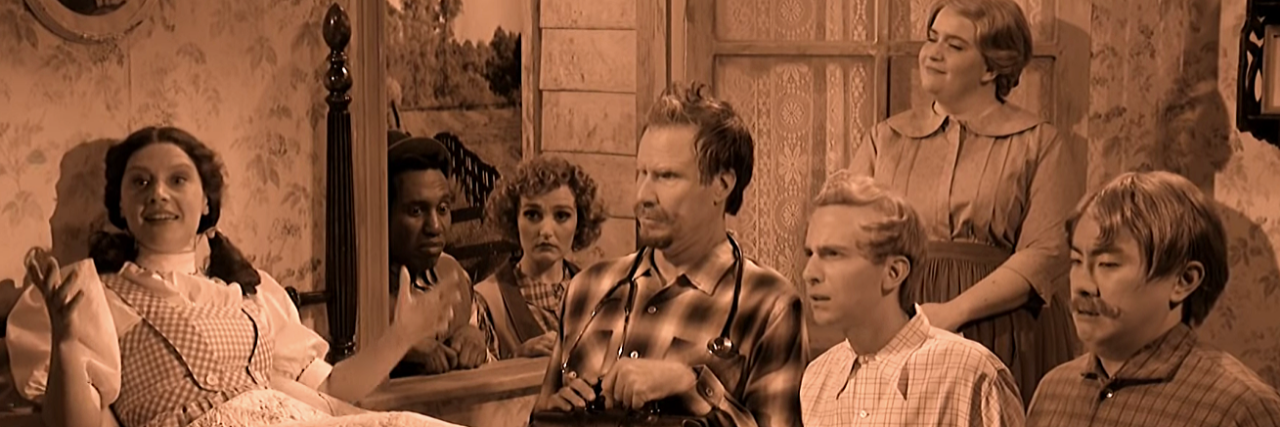I have mixed feelings about a Saturday Night Live sketch that premiered this week which showed an alternative ending to the 1939 MGM classic, “The Wizard of Oz.” “The Wizard of Oz” is celebrating its 80th anniversary and yet, attitudes towards people with dwarfism have barely changed. People with dwarfism are still represented as a comedic prop to be laughed at, and these problematic attitudes remain as popular today as they were back then.
As a woman with dwarfism, I am all too aware of the problematic stereotype “The Wizard of Oz” has helped reinforce in relation to dwarfism. While the SNL sketch exposed this problematic attitude towards people with dwarfism, it also seemed to reinforce it. The sketch helped demonstrate the difficulties people with dwarfism, especially those in high ranking professions, face in being taken seriously. Yet throughout the sketch the main source of laughter came from the people with dwarfism, or rather those imitating people with dwarfism.
The sketch begins with Dorothy (played by Kate Mckinnon) waking up from her dream in Oz. She tells the three farmhands how they first all appeared in her dream as the well-known Scarecrow, Tin Man and Lion. This did not cause a stir, because even the thought of being a Scarecrow did not seem funny or strange. Then Will Farrell shuffles in on his knees along with two other actors who are also on their knees in order to imitate people with dwarfism.
Imitating a disabled person for entertainment purposes is known as “cripping up” and is often critiqued by disabled people. In this situation, Ferrell and the other cast members can be criticized for pretending to be people with dwarfism. Audience members automatically know who they are and as soon as they appear burst into laughter. Of course, how else do we expect people to respond to characters with dwarfism? We are always the comedic prop that provides an easy way to elicit guilt-free laughter from the audience.
The sketch shows how people with dwarfism in real life are always associated with the entertainment industry, yet the characters seem oblivious to this. One of the actors imitating a person with dwarfism asks Dorothy if she dreamed of them as “funny little weirdos” who were there to “make you laugh.” That is basically the purpose of most characters with dwarfism in films and what I found interesting about the sketch. It actually exposed a common stereotype — but failed to challenge it.
The several “small” characters go on to ask Dorothy if they still had the same professions in her dream as they do in reality, such as being a lawyer, a teacher and a doctor, only to find out they were actually the Munchkins. The characters are completely oblivious to the role they played in Dorothy’s dream, which is what supposedly makes the sketch funny. I mean what other roles can people with dwarfism play except the small characters that everyone is encouraged to laugh at? Yet, the sketch hinted that people with dwarfism could be something more respectable through the occupation each one held.
All of the professions the several small characters had are held by people with dwarfism, but of course films such as “The Wizard of Oz” create a different image. In films featuring characters with dwarfism we are rarely depicted as ordinary people working in everyday occupations. This creates a problematic stereotype that I have often encountered within society. Despite working as a university lecturer, people often presume I work as an entertainer. For example, once when out shopping I was asked by a mother if I would be an entertainer for her child’s birthday party as the child found people like me (dwarfs) hilarious. The child’s only reference to people with dwarfism had probably been in films such as “The Wizard of Oz” or perhaps “Snow White.”
In fact, one of the actors who played a Munchkin in the film was a trained accountant who had difficulty gaining employment due to people’s attitude towards his dwarfism. According to the book, “The Cinema of Isolation: A History of Physical Disability in the Movies,” one interviewer even told him that he belonged in a carnival. This disablist attitude would not be so overt now due to the Americans with Disabilities Act, however that does not mean people do not have the same perception of people with dwarfism in this day and age. Now with disability legislation employers just need to ensure that their attitudes are more covert.
This is ultimately what leaves me with mixed feelings about the sketch — the laughter towards people with dwarfism was very overt, but the underlying message was much more covert. Representations of dwarfism in films and television shows need to refrain from disablist stereotypes that only reinforce dwarfism as something to be laughed at in society. I think SNL came close to this, but may have just missed the mark.
What do you think? Let us know in the comments below.

